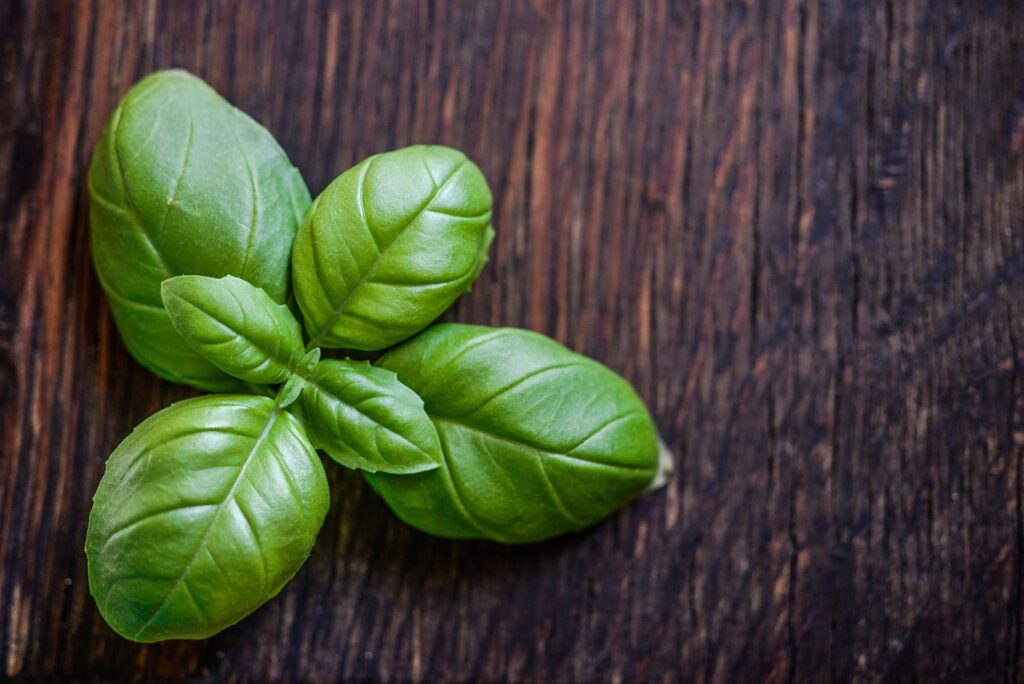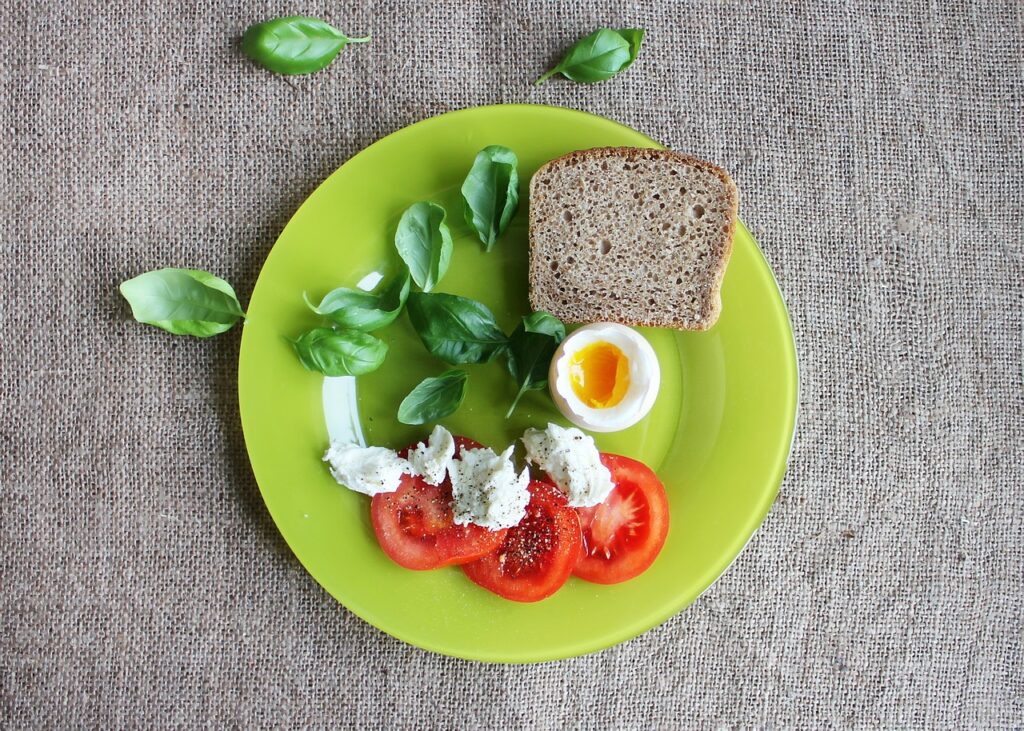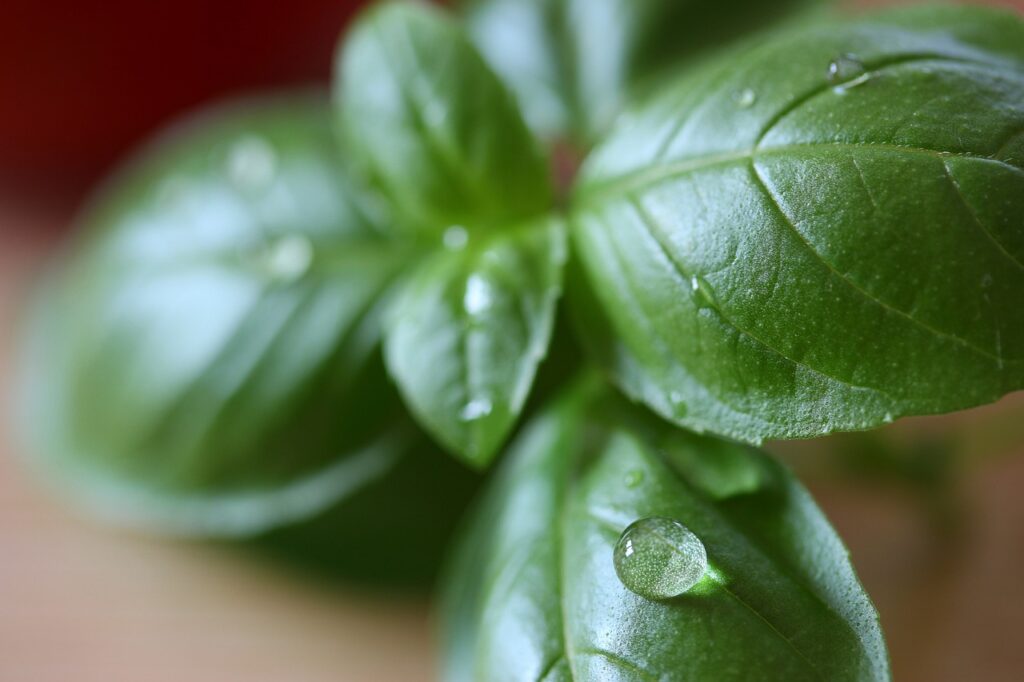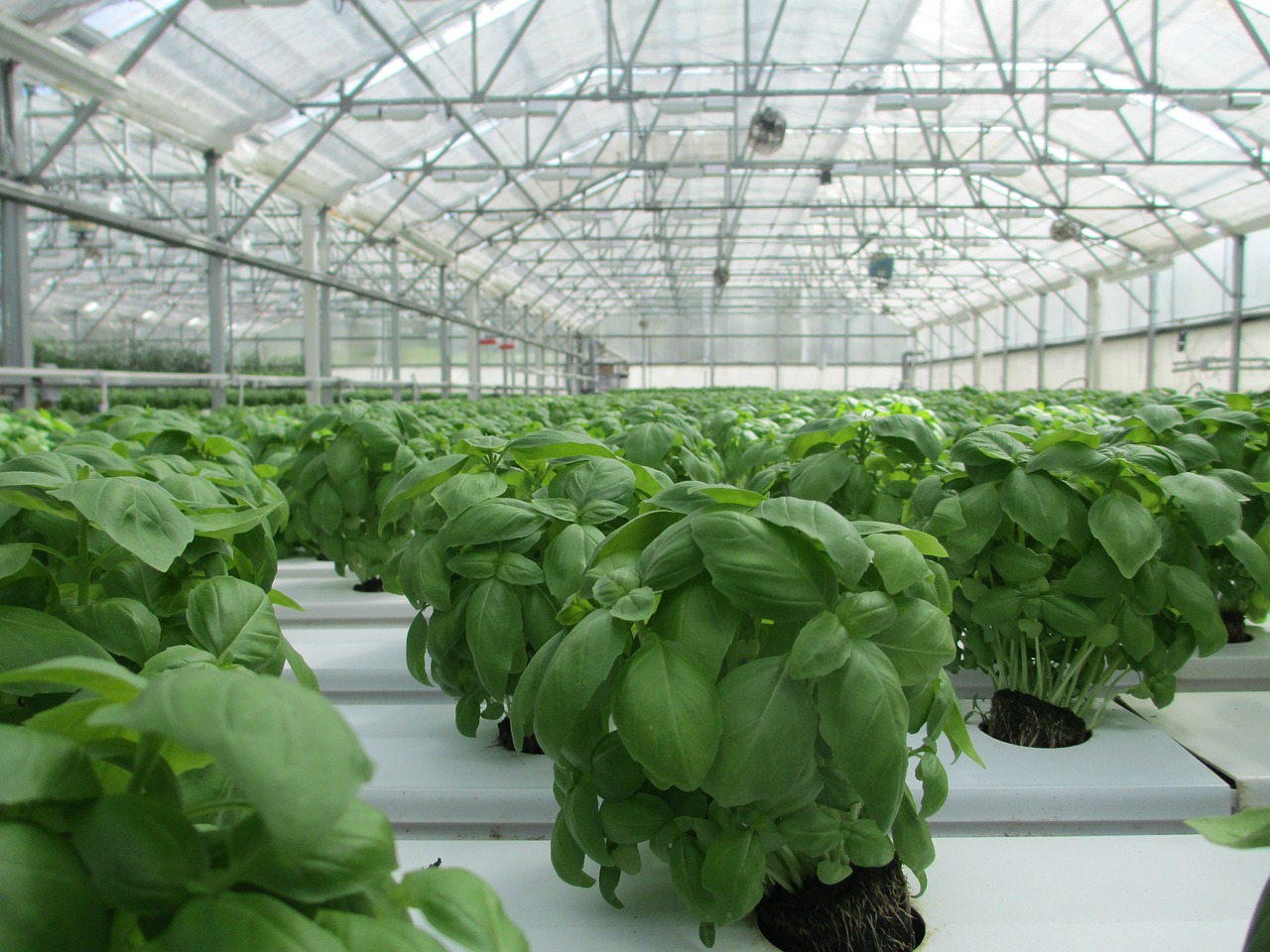Have you ever wanted to have an endless supply of fresh basil at your fingertips? Imagine the sweet, aromatic leaves available anytime you want to whip up a pesto, garnish a pizza, or add a splash of flavor to your salad. This guide will show you how to plant and grow basil at home, transforming your culinary experience. Not only does basil add a distinct flavor to your dishes, but it also serves as a beautiful addition to your indoor or outdoor garden.
Whether you’re an experienced gardener or a first-time planter, this step-by-step guide is designed to make the process easy, enjoyable, and successful. Let’s start our gardening journey!
Health Benefits of Basil

Basil is more than just a culinary superstar; it’s packed with numerous health benefits that make it a worthwhile addition to your diet.
Rich in Antioxidants
Basil leaves are power-packed with an array of antioxidants, which are like the body’s own personal cheerleading squad, rooting for your well-being. These antioxidants combat the harmful effects of free radicals, those naughty little molecules that can cause damage to your cells and contribute to aging and diseases. By including basil in your meals, you’re essentially inviting a team of mini superheroes to defend your body from the inside out!
Promotes Cardiovascular Health
Basil also contributes to cardiovascular health thanks to its magnesium content. This essential nutrient helps regulate blood pressure and promotes healthy heart function. Incorporating basil into your diet can support your overall cardiovascular health, potentially reducing the risk of heart disease.
Additionally, basil is a good source of vitamin K, which plays a vital role in blood clotting. It helps in the speedy healing of wounds and bruises and prevents excessive bleeding. The nutrients in basil work together to ensure your body functions at its best, making it a great addition to your home garden and your meals!
Supports Digestive Health
Basil aids in promoting digestive health as well. It’s known for its digestive-enhancing properties, helping to stimulate appetite and production of digestive enzymes, aiding food digestion. This makes basil a great choice to include in your meals, especially if you suffer from indigestion or bloating.
Moreover, the eugenol present in basil leaves has anti-inflammatory properties that can relieve inflammatory bowel conditions. So, not only does growing basil at home provide you with a flavorful addition to your meals, but it also contributes to maintaining a healthy digestive system.
Boosts Immune System
Basil is not just a flavorful addition to your food; it’s also a powerful ally for your immune system. The herb is a rich source of vitamin A, beta-carotene, and other carotenoids that act as antioxidants for your immune system. These nutrients help to strengthen the immune cells, enabling them to fight off infections and diseases more effectively.
Moreover, the essential oils in basil have antibacterial properties, which can help to inhibit the growth of harmful bacteria. By adding fresh basil leaves to your dishes, you’re not just enhancing the taste but also bolstering your body’s defenses against common illnesses.
Thus, growing basil at home is an excellent way to boost your overall health while adding gourmet flavor to your meals.
Mental Health Benefits
Basil’s benefits extend to the sphere of mental health as well. The herb is rich in adaptogens, a category of herbs and plants that help the body resist physical, chemical, or biological stressors. By helping to regulate the body’s stress response, basil can assist in maintaining a balanced mood and promoting mental well-being.
In traditional Ayurvedic medicine, basil has been used as a nerve tonic and to sharpen memory. For a soothing and calming effect, one can simply chew on basil leaves or brew a cup of basil tea. Therefore, incorporating basil into your everyday routine can satisfy your taste buds and contribute to a healthier mind and a positive outlook.
Growing it at home ensures you have a constant supply of this mental health booster at your disposal.
Understanding The Perks of Homegrown Basil

You might be wondering, why all the fuss about growing basil at home? Well, let me tell you, the advantages are countless! Besides the utter convenience of having fresh basil at your fingertips, you’ll gain a newfound appreciation for the robust flavor and aroma that only homegrown basil can provide. Store-bought versions just can’t compete.
Moreover, growing your own basil means you know exactly where it comes from and that there are no hidden pesticides or chemicals involved. It’s all 100% natural, just the way we like it. Did you know basil is packed with antioxidants and has anti-inflammatory properties? So, it’s not just about taste; it’s also a win for your health.
And let’s not forget the joy of watching your little basil plant grow day by day. It’s a rewarding hobby that brings with it a sense of achievement and connection with nature. So, ready to get those green thumbs working?
Choosing the Right Basil Variety
When choosing the right basil variety to grow at home, the options are as varied as the dishes you can create with this versatile herb.
The classic Sweet Basil, with its large, dark green leaves, is a staple in Italian cuisine, while the smaller-leafed Greek Basil is perfect for a pot on your kitchen windowsill. Love a touch of spice? Then the cinnamon-flavored Thai basil might be your best bet. Or maybe you’re a fan of lemon and lime flavors? In that case, give the citrusy Lime Basil or Lemon Basil a whirl.
Choosing your basil variety isn’t just about the taste, though. Different varieties have differing growth habits and plant sizes, affecting where and how you grow them. For instance, a compact variety like Spicy Globe Basil could be your perfect match if you’re working with limited space.
So, get adventurous, and don’t be afraid to try a few different types. After all, variety is the spice of life! And in the case of basil, variety is also your kitchen’s spice.
Gathering Your Gardening Gear

Before we embark on the growing journey, gathering all the necessary gardening gear is crucial. You don’t need an arsenal of tools, but a few key items will simplify the process and maximize your success. So, what’s on the list?
First up, you’ll need some quality potting soil. Basil loves well-draining, fertile soil; your choice here can make or break your plant’s success. So, don’t skimp on this one—get the best potting mix you can find.
Next, you’ll want to get your hands on the seeds or seedlings of the basil variety you chose. Head to your local nursery, or take a peek online—a world of basil is out there waiting for you!
Then, you’ll need a pot or a planter. If you’re planting indoors, any pot with sufficient drainage will do. For outdoor planting, a raised bed or a spot in your garden with good sunlight would be perfect.
Add a watering can, a sunny window ledge, or an outdoor spot, a dash of love (yes, plants need love, too!), and you’re all set. Now, let’s get down to the dirt and start growing!
Step-by-Step Guide on How to Plant
Preparing the Soil
The first step to planting basil is to prepare your soil. Begin by filling your pot or planter with your purchased potting mix. Remember, basil prefers well-draining soil, so ensure your pot has enough drainage holes at the bottom. If planting outdoors, select a spot in your garden that gets at least 6 to 8 hours of sunlight each day. Before sowing, loosen the soil with a garden fork or trowel to improve aeration and facilitate root penetration.
Sowing the Seeds
Once your soil is prepared, it’s time to sow your basil seeds. Place the seeds on top of the soil, spacing them about 10 to 12 inches apart to allow ample room for growth. For smaller basil varieties, a spacing of 6 to 8 inches should suffice. Cover the seeds lightly with about 1/4 inch of soil and then gently pat down the soil surface to ensure good seed-to-soil contact.
Watering and Care
After sowing, water the soil gently but thoroughly using a watering can. It’s important to keep the soil evenly moist (but not waterlogged) as the seeds germinate and the seedlings start to grow. Basil plants prefer a consistent watering schedule, so try to water your plants in the morning to allow any excess water to evaporate throughout the day.
Watching the Growth
Over the next 5 to 7 days, you should see your little seedlings start to emerge. At this stage, they’ll be tiny, but don’t worry; with proper care, they’ll soon begin to grow strong and robust. Keep them in a sunny spot and maintain a consistent watering schedule.
Pruning the Basil
Once your basil plants reach about 6 inches in height, it’s time for the first pruning. Snip off the top set of leaves, encouraging the plant to grow bushier and produce more leaves for harvesting. Remember to always prune or pick the leaves from the top down.
Growing basil at home may seem daunting at first, but with the right tools, patience, and love, it can be a rewarding and aromatic addition to your home. Follow these steps, and you’ll soon have a thriving basil plant ready to add flavor and zest to your cooking!
Pests and Diseases: Prevention and Control
Basil is a resilient plant, but it can be susceptible to pests and diseases like all living things. The most common basil pest is the aphid, which usually feeds on new growth and can stunt your plant’s growth if not controlled. To prevent an infestation, keep your plants well-watered and feed them regularly with liquid fertilizer. If you do notice any signs of aphid activity (such as wilting leaves or stickiness on the stems), spray them with mild insecticidal soap to get rid of them.
In addition, certain diseases, such as downy mildew and powdery mildew, can affect your basil plants if they’re exposed to too much water or humidity. To prevent this, ensure your plants get enough sunlight and air circulation. If you notice any signs of disease, remove the affected leaves immediately and spray with a fungicidal solution to reduce further spread.
Taking these simple preventative steps can minimize the risk of pests and diseases in your basil plant. With a little dedication and care, you’ll soon have a thriving basil garden that will bring flavor and aroma to your kitchen!
Harvesting Basil

Harvesting your basil correctly is crucial to promoting further growth and enjoying a continuous supply of fresh, flavor-packed leaves. Begin by identifying the right time to harvest, which is usually when the plant is about 6 to 8 inches tall. The best time to pick the leaves is in the morning when the plant’s oils peak, ensuring the most flavorful harvest.
To harvest, snip off the top of a stem just above a pair of leaves. This encourages the plant to bush out and produce more leaves. Be sure never to remove more than one-third of the plant at a time, as this could weaken the plant.
Storing Your Basil
There are a few ways to store your freshly harvested basil. If you plan on using it within a few days, the best method is to place the cut stems in a glass of water, changing the water every couple of days. Another method for short-term storage is to wrap the leaves in a damp paper towel and store them in an airtight container in the fridge.
For long-term storage, you can dry or freeze your basil. To dry, tie the stems together and hang them in a well-ventilated, dark place until the leaves crumble easily. Once dry, store in an airtight container.
For freezing, first dice the leaves and position them in an ice cube tray. Then, douse them with water or olive oil before setting them in the freezer. After they’ve solidified, shift the cubes into a freezer-safe bag to be used at your convenience in the future.
With these steps, you can enjoy your homegrown basil all year round, adding a burst of flavor to your dishes whenever you need it!
Frequently Asked Questions
Q: How do I start planting basil seeds at home?
Starting basil seeds at home is a straightforward process. First, you’ll need to prepare your pots. Fill them with a mixture of organic potting soil, coarse sand, and compost for optimal growth. Then, use your finger to poke holes about an inch and a half deep into the soil. Place your basil seeds in these holes and cover them lightly with soil. Make sure to water the seeds gently so as not to displace them.
Q: What are some tips for growing basil indoors successfully?
To successfully grow basil indoors, place your plants in a warm window with a southern exposure. Basil thrives in plenty of light, so ensure they get at least 6 to 8 hours of sunlight daily. Avoid placing them in drafty windows or areas where temperatures drop significantly at night. Also, keep the soil moist but well-drained.
Q: Can I include basil in my herb garden? Which herbs make good companions for basil?
Absolutely! Basil makes a great addition to any herb garden. When it comes to companion planting, basil pairs well with herbs like parsley, oregano, and rosemary thyme. These herbs share similar light and water requirements, making them ideal companions. However, be mindful not to plant dill near your basil, as they can inhibit each other’s growth.
Q: What are some different types of basil I can grow at home?
There are several types of basil you can grow at home. Genovese basil is a classic variety that’s used widely in Italian cooking. Holy basil, also known as tulsi, is a staple in Indian cuisine and is revered for its medicinal properties. Depending on your culinary needs and taste preferences, you may choose to grow one or both of these varieties, among others.
Q: Can I incorporate basil in my vegetable garden? What vegetables pair well with it?
Basil is a fantastic addition to any vegetable garden. In addition to its culinary uses, basil can help repel pests like aphids and hornworms. Tomatoes are a classic companion for basil, as they benefit from each other’s presence. Other good companions include peppers and asparagus. On the other hand, basil should not be planted near rue or sage as they could hinder each other’s growth.
Final Words
In wrapping up, growing basil at home is a truly rewarding experience that marries the joy of gardening with the practicality of having fresh herbs on hand whenever you need them. The process may seem intricate at first, but remember, all it takes is a bit of patience, care, and love. Start with the right seeds or seedlings, give them a sunny spot, maintain the right moisture levels, and don’t forget the occasional pruning. Before you know it, you’ll have your own lush, green basil plants swaying in the breeze.
And the best part? Plucking off those fragrant leaves, feeling their smooth texture, and finally tossing them into your favorite dish. There’s nothing quite like the satisfaction of knowing that you grew those herbs yourself. So, go ahead and embark on this green journey. You’ll not only end up with fresh basil but also a newfound appreciation for the simple yet profound art of growing!


